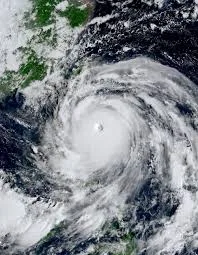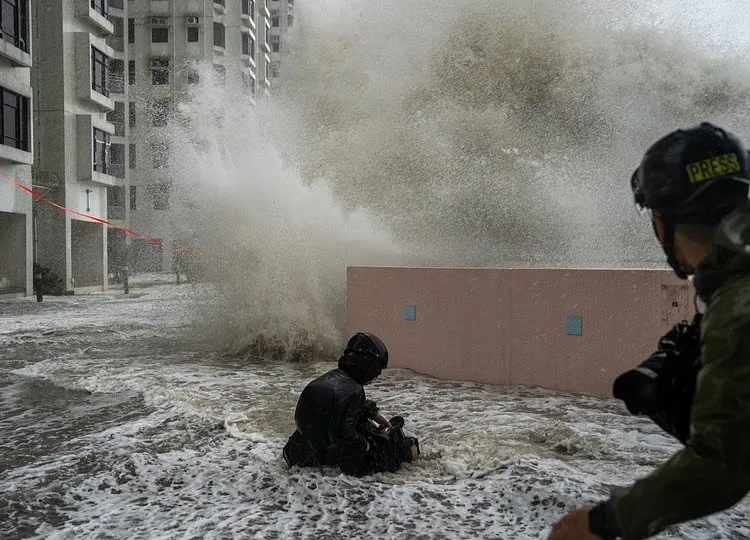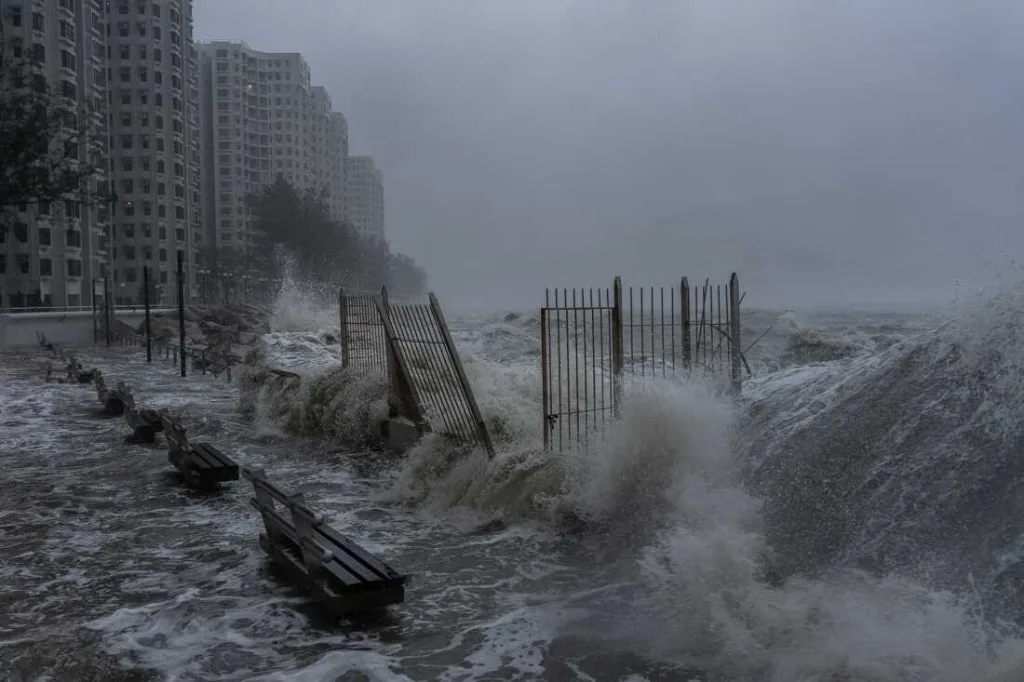Taipei / Hong Kong / Guangdong Province
Super Typhoon Ragasa, one of the fiercest storms ever recorded in the Pacific, has struck East Asia with a fury that left residents, governments, and international observers reeling. With sustained winds peaking at 270 kilometers per hour and a storm surge that overwhelmed coastal defenses, Ragasa claimed at least 14 lives in Taiwan and Hong Kong, injured more than 100 people, and forced the evacuation of over 2 million residents across southern China. The event has sparked urgent conversations about climate resilience, disaster preparedness, and the rising human and economic toll of extreme weather.

Taiwan: Mountains Collapsing, Lakes Overflowing
Taiwan bore the brunt of Ragasa’s initial landfall. In Hualien County, a barrier lake collapsed under the torrential rain, forcing the displacement of more than 7,600 residents. Landslides cut off entire mountain villages, isolating hundreds of families who now await emergency food and medical deliveries by helicopter. Infrastructure damage has been immense: highways split by mudslides, power lines toppled, and communications disrupted. Local authorities described the storm as the worst natural disaster in decades, with repair costs expected to run into the billions.
President Lai Ching-te declared a state of national emergency, pledging rapid relief and reconstruction. Yet Taiwan’s energy minister admitted that restoring power to rural and mountainous areas could take weeks. Climate experts warned that Taiwan, already highly vulnerable to typhoons, will need to invest far more in resilient infrastructure, flood defenses, and early warning systems.

Hong Kong: A City Under Water
Hong Kong faced Ragasa at its most terrifying. Videos circulating on social media showed walls of seawater smashing through glass doors of the luxury Fullerton Ocean Park Hotel, sweeping guests into the lobby and leaving trails of destruction. Public transport ground to a halt as railway lines flooded, and entire neighborhoods were cut off by rising waters.
Chief Executive John Lee called the storm “an unprecedented crisis,” mobilizing the city’s emergency services and appealing to Beijing for additional support. Schools and businesses remain closed, while the Hong Kong Observatory has issued continued flood warnings. Insurance companies estimate damages could exceed $1.5 billion for the city alone, though some analysts predict the figure may rise much higher as claims pour in.
China: Massive Evacuations and National Response
In Guangdong province, Chinese authorities evacuated more than 2.2 million people ahead of the storm. Emergency shelters across Guangzhou, Shenzhen, and Zhuhai were filled with displaced residents as the typhoon made landfall. Despite these precautions, Ragasa’s winds toppled cranes, shattered windows on skyscrapers, and left urban districts without power.
China’s central government ordered the immediate deployment of the People’s Liberation Army to assist with disaster relief. Beijing also pledged emergency funding for reconstruction, though critics argue the region’s vulnerability is linked to decades of unregulated urban expansion into flood-prone areas. The typhoon comes amid ongoing debates about China’s urban resilience planning, especially in coastal megacities.

Human Stories Amid the Storm
Beyond statistics, the human toll is visible in countless personal tragedies: families wading chest-deep through torrents carrying children above their heads, small businesses destroyed in hours, elderly residents left stranded on rooftops awaiting rescue. In Taiwan, one elderly farmer was reported missing after rushing to save livestock as floodwaters surged. In Hong Kong, young couples described terrifying hours trapped in submerged buildings.
International aid agencies, including the Red Cross and Médecins Sans Frontières, have offered assistance. Japan and South Korea pledged humanitarian support, while the United States announced emergency funding to aid relief efforts.
Climate Change and the Bigger Picture
Meteorologists have long warned that climate change is making Pacific typhoons more powerful, wetter, and slower-moving. Ragasa is being cited as a stark example of this trend. “The storm carried an extraordinary amount of moisture, overwhelming even advanced drainage systems,” said Dr. Mei-Ling Chen, a climate scientist at National Taiwan University.
The Intergovernmental Panel on Climate Change (IPCC) has emphasized that unless global greenhouse gas emissions are drastically reduced, storms like Ragasa will become increasingly common. Sea-level rise compounds the risks, as higher base levels of the ocean make storm surges more destructive.
Economic Aftershocks
The combined economic toll for Taiwan, Hong Kong, and Guangdong is projected to exceed $10 billion. This includes destroyed infrastructure, business interruptions, agricultural losses, and rebuilding costs. For Taiwan, already struggling with slowing growth and global supply chain disruptions, Ragasa represents a significant setback. Electronics production—especially semiconductors—was disrupted by power outages, potentially causing ripple effects in global tech markets.
In Hong Kong, financial markets reopened cautiously, but the city’s insurance sector faces historic payouts. For China, the disaster underscores the challenge of maintaining economic momentum while absorbing mounting climate shocks.
Outlook
Recovery efforts are underway, but the road will be long. Experts warn that the true scale of destruction may not be known for weeks. As relief pours in, Ragasa has become more than just a storm—it is a symbol of the vulnerability of even advanced societies in the face of climate-driven disasters. For East Asia, it is a painful reminder that the age of “superstorms” has truly arrived.
